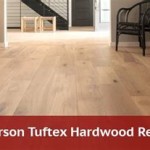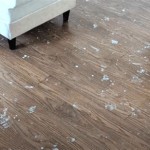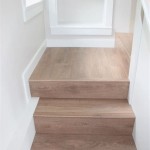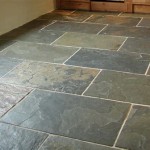Can Buckled Wood Floors Be Repaired?
Buckling in wood floors is a distressing sight for any homeowner. Characterized by an upward warping or lifting of the planks, it signifies a disruption in the floor's structural integrity. While the visual impact is immediate, understanding the cause is crucial for effective repair. Several factors contribute to buckling, ranging from environmental changes to improper installation. Fortunately, in many cases, buckled wood floors can be repaired, restoring their beauty and stability. However, the extent and type of repair depend heavily on the underlying cause and severity of the damage.
Assessing the Damage and Identifying the Cause
Before undertaking any repairs, a thorough assessment of the damage is necessary. This involves identifying the buckled areas, measuring the extent of the lift, and investigating the potential causes. Common culprits include moisture damage (often from leaks or spills), excessive humidity, improper installation (leaving insufficient expansion gaps), and temperature fluctuations.
Minor Buckling: Repairing Surface Deformations
For minor buckling where only the surface of the wood is affected and the subfloor remains intact, relatively simple repairs might suffice. Sanding down the raised sections can often level out minor imperfections. Following sanding, the affected area should be refinished to match the surrounding floor. This approach is usually effective for minor cupping caused by humidity fluctuations.
Moderate Buckling: Addressing Localized Problems
When the buckling is more pronounced and involves a localized area, replacing the affected planks might be necessary. This involves carefully removing the damaged planks and installing new ones. Matching the existing wood's species, finish, and age can be challenging. If an exact match isn't feasible, replacing a larger section or strategically placing the new boards in a less noticeable area might be necessary.
Severe Buckling: Addressing Widespread Damage
Widespread buckling often indicates a more significant underlying problem, such as extensive water damage or structural issues with the subfloor. In these cases, a complete or partial floor replacement might be the only viable solution. This is a more extensive and costly undertaking, requiring professional assessment and execution. Addressing the root cause of the buckling, such as repairing leaks or reinforcing the subfloor, is crucial to prevent recurrence.
The Role of Moisture in Wood Floor Buckling
Moisture plays a significant role in wood floor buckling. Wood is hygroscopic, meaning it absorbs and releases moisture from the surrounding environment. Excessive moisture absorption causes the wood to expand, leading to warping and buckling. Controlling humidity levels in the home, promptly addressing leaks and spills, and ensuring proper ventilation can significantly reduce the risk of moisture-related buckling.
Importance of Expansion Gaps in Wood Flooring
Proper installation techniques are critical for preventing buckling. One essential aspect is leaving sufficient expansion gaps around the perimeter of the floor. These gaps allow the wood to expand and contract naturally with changes in temperature and humidity, preventing the build-up of pressure that can lead to buckling. Ignoring this critical step during installation can greatly increase the risk of future problems.
Professional vs. DIY Repairs
While some minor buckling repairs can be addressed with DIY approaches, it's essential to recognize the limits of one's skills and experience. Assessing the cause and extent of the damage requires expertise. Incorrectly performed repairs can exacerbate the problem and lead to more costly interventions down the line. Consulting with a qualified flooring professional is highly recommended, especially for moderate to severe buckling, or when the underlying cause is unclear.
Preventing Future Buckling
Preventing buckling is always preferable to addressing it after the fact. Implementing preventative measures can significantly extend the lifespan and beauty of wood floors. Maintaining consistent humidity levels, using mats in high-moisture areas like bathrooms and kitchens, and promptly addressing any leaks are essential steps. Regularly inspecting the floor for signs of moisture damage or cupping can also help catch potential problems early.

How To Repair Buckled Hardwood Floors Bona Com

Buckled Hardwood Floors Job Ysis Why Fixes

Buckling Floors Now What News And Events For Midsouth Crawl Space Solutions

Water Damaged Buckled Hardwood Floor Repair Hudson Group

Buckled Wood Floors Causes And Fixes Usvintagewood Com

How To Repair Buckled Hardwood Floor Top 6 Easy Steps

Hardwood Floor Problems Buckling Floors Series 3 Of 6

Buckling Floor Solutions

How To Repair Buckled Parquet Floors

How To Repair Buckled Hardwood Floors Bona Com
See Also







